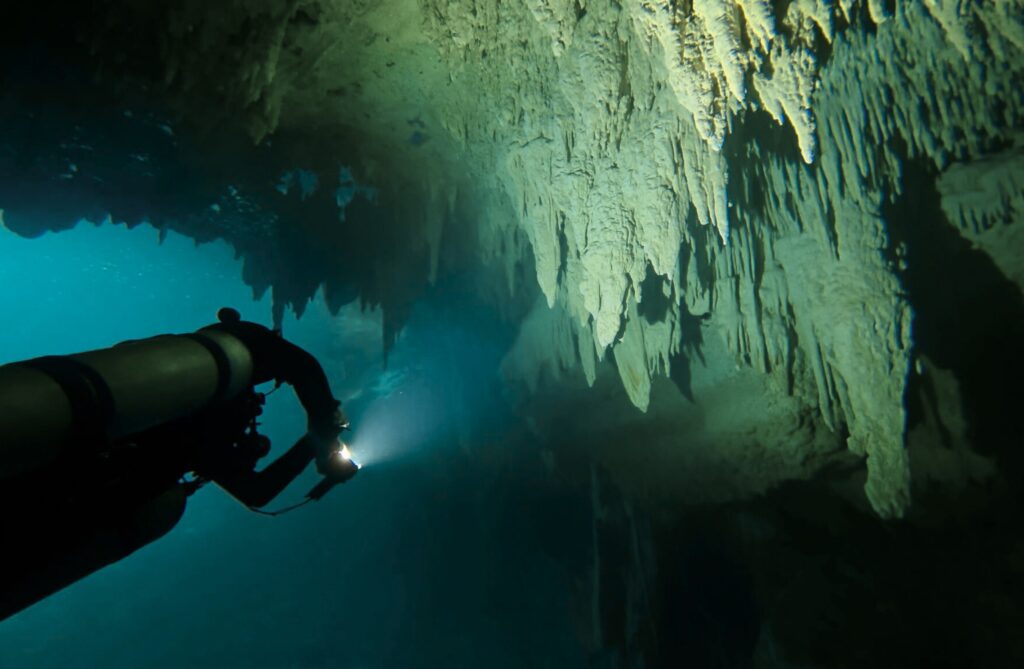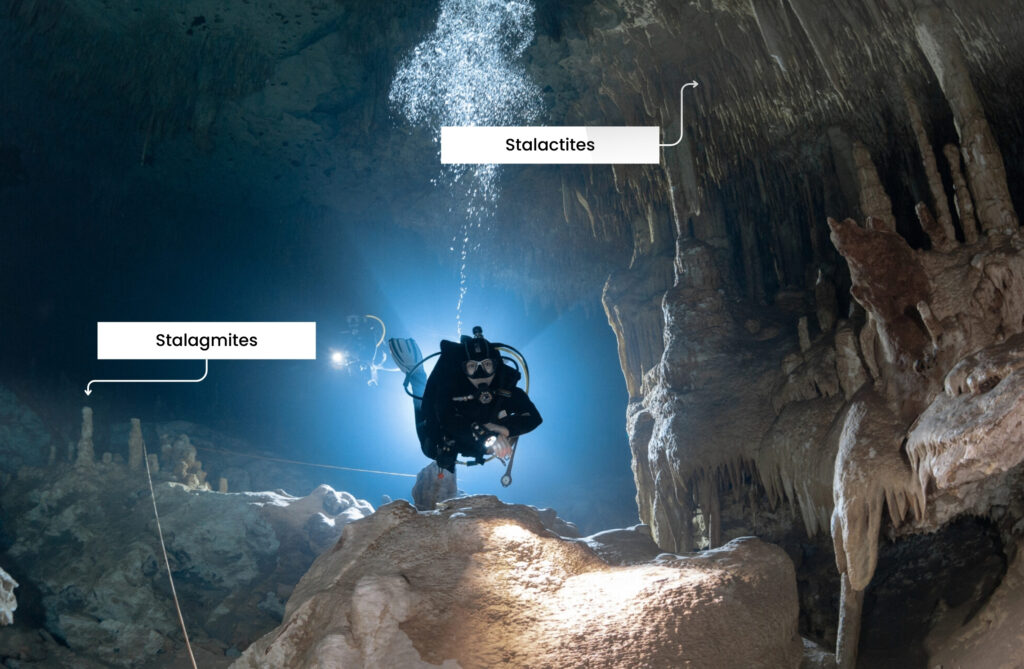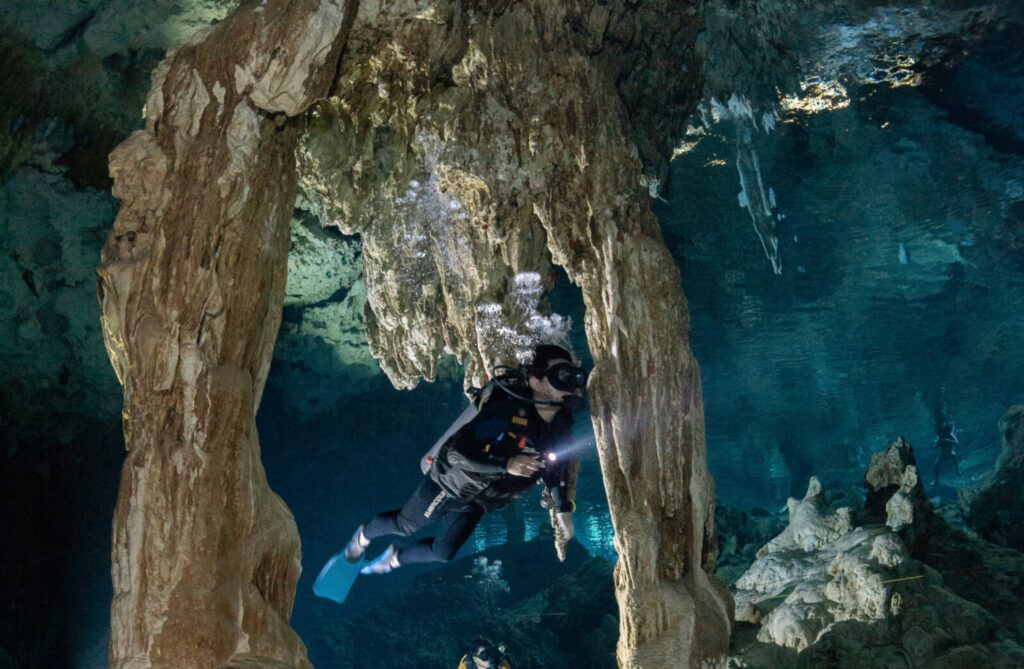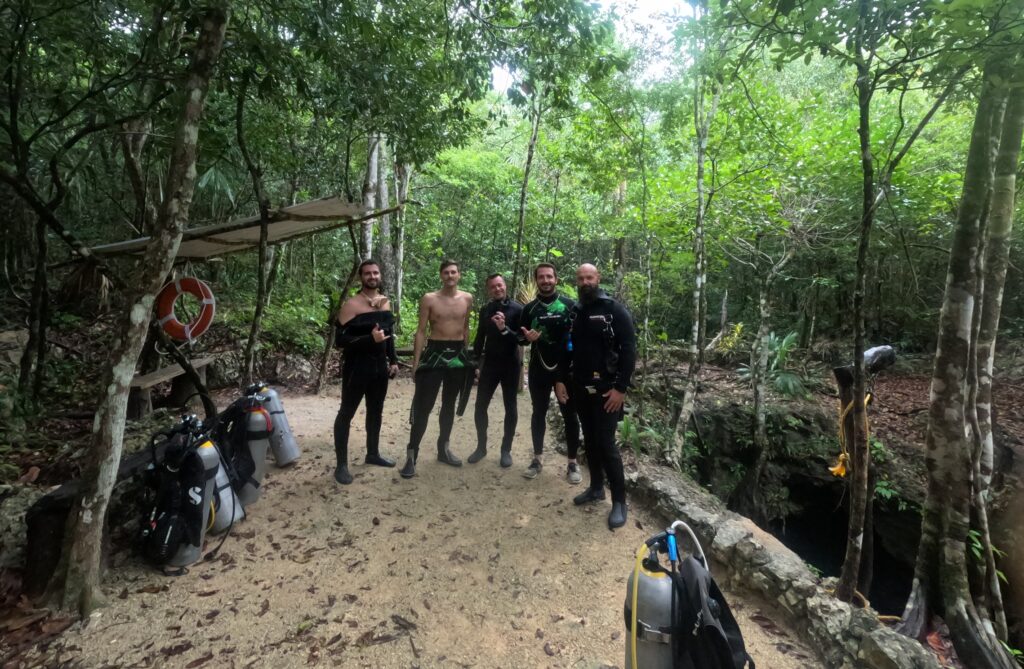You probably first learned about these formations in school, but chances are you’ve mixed them up or forgotten the difference at some point…
Stalactites and stalagmites are among the most fascinating geological formations found in caves and caverns around the world.
Their mysterious shapes, slow growth, and mineral origins intrigue scientists, travelers, and especially cenote divers.
In this article, we’ll explain in detail what these structures are, how they form, and where you can admire them up close.

What Is a Stalactite ?
A stalactite is a hanging calcite formation that develops on the ceilings of caves, cenotes, and underground spaces through the slow and continuous dripping of calcium-rich water.
It belongs to a category known as speleothems, which are rock formations created by the action of water.

As water passes through the rock, it carries minerals with it, mostly limestone. When the water drips from the ceiling and evaporates, it gradually leaves behind solid deposits that form a stalactite. Sometimes, these deposits follow tiny cracks in the rock.
The formation process is extremely slow, often less than 10cm every thousand years. Some stalactites have been dated to over 190,000 years old based on scientific analysis. The speed of formation depends on the amount of minerals in the water, how frequently the drops fall, and the humidity in the air.
When the drop falls to the ground and begins forming an upward-growing structure, it becomes a stalagmite.
What Is a Stalagmite ?
A stalagmite is a mineral formation that grows upward from the ground, mainly formed by the accumulation of dissolved limestone in water droplets falling from the ceiling.

When mineral-rich water drips from a stalactite hanging from the ceiling, it leaves behind a small deposit of calcite where the drop hits the ground. This deposit gradually builds up, layer by layer, forming a structure that grows upward from the floor toward the ceiling.
The growth of a stalagmite depends on several factors, including the amount of dissolved limestone, how frequently the drops fall, and the overall conditions inside the cave.
The tallest known stalagmite stands over 70 meters high, located in the Sơn Đoòng cave in Vietnam.
What Is the Difference Between a Stalactite and a Stalagmite ?
Stalactites hang from the ceiling of the cave, while stalagmites rise from the ground toward the ceiling. It’s that simple !

The only real difference between the two is where they form. Otherwise, they are very similar. Stalactites and stalagmites are both created when mineral-rich water drips slowly from the ceiling of a cave.
Among all the cenotes in the Riviera Maya, Taak Bi Ha, Dos Ojos, and Zapote feature some of the most impressive stalactites and stalagmites.
How to Remember the Difference?
Mnemonic Tip:
- The “T” in stalacTite reminds you of “Top” (it falls from the ceiling).
- The “M” in stalagMite reminds you of “Mount” (it rises from the ground).
Visual Summary:
| Formation | Location | Direction | Main Formation Process |
|---|---|---|---|
| Stalactite | Cave ceiling | Downward | Dripping deposit |
| Stalagmite | Cave floor | Upward | Splatter deposit |
What Happens When Stalactites and Stalagmites Meet?
When, over the centuries, a stalagmite rising from the ground and a stalactite hanging from the ceiling continue their slow growth and eventually meet, they fuse together to form a single structure called a column or stalagmitic pillar.

This phenomenon is the result of an extremely slow process, often taking several thousand years, as these mineral formations grow at a rate of only a few millimeters per year.
Where Can You See Stalactites and Stalagmites?
In Mexico, many cenotes in the Yucatán, especially those around Tulum and Playa del Carmen, are actually partially or fully flooded caves, often showcasing an impressive display of stalactites and stalagmites.


These formations are a testament to a time when the caves were dry before being submerged. What’s more, you have the unique opportunity to dive and admire this geological wonder up close.
